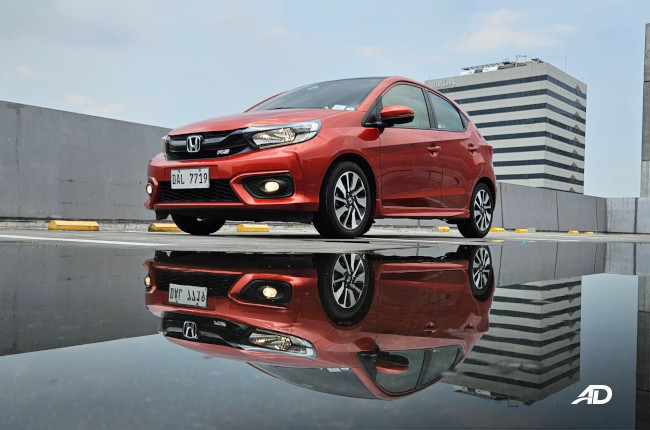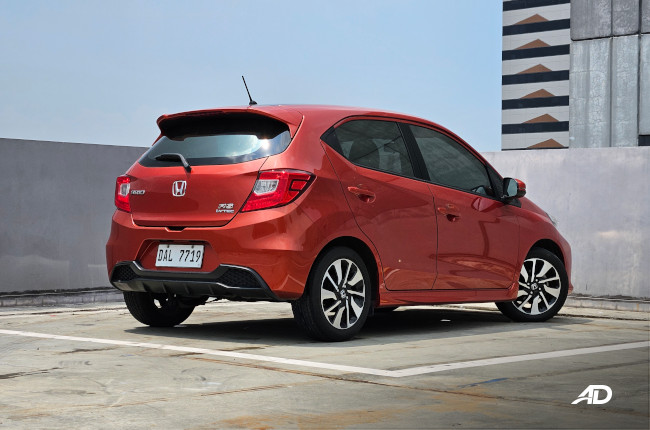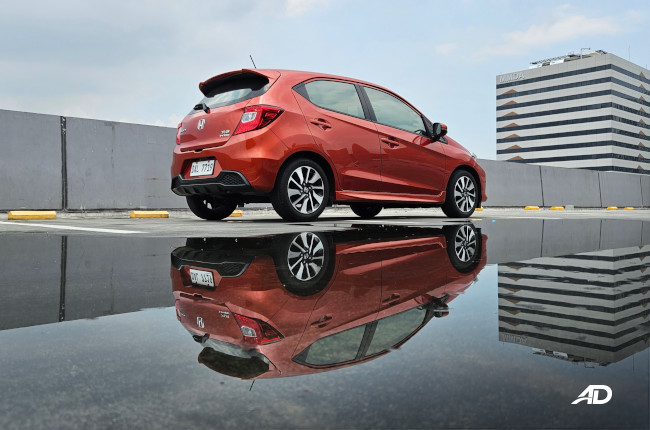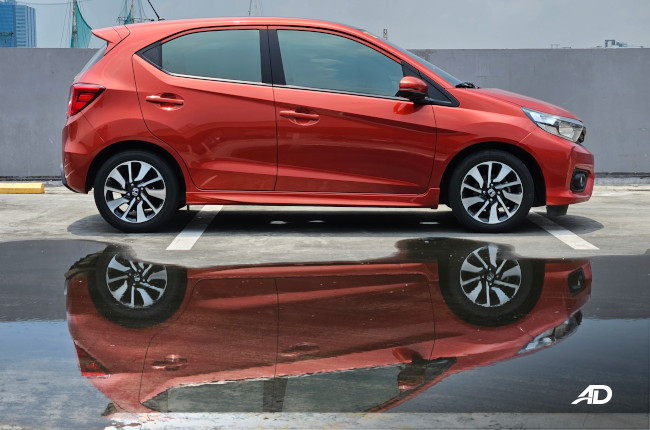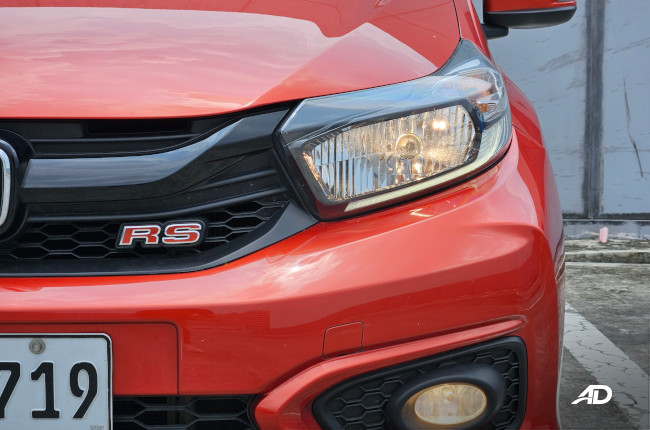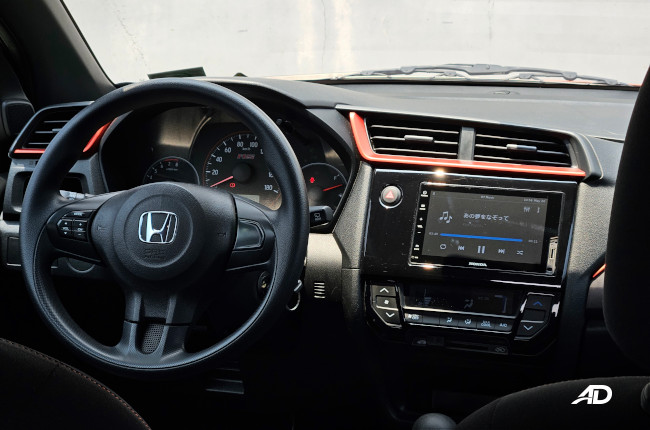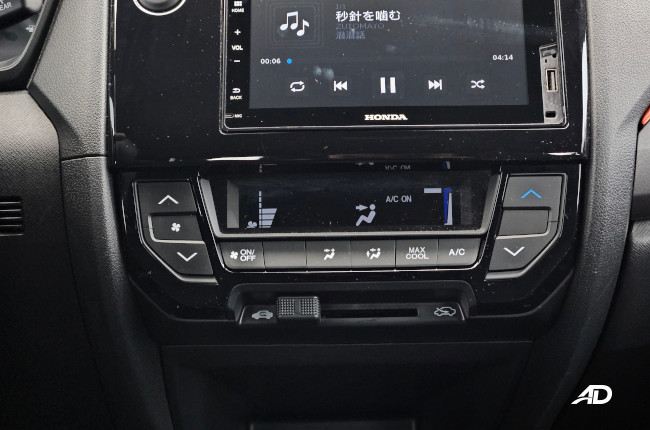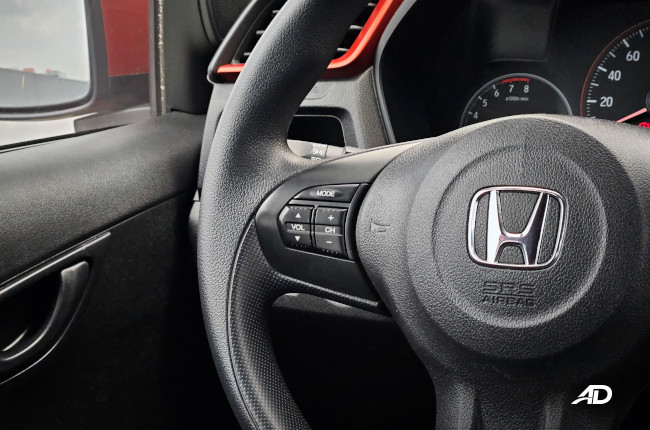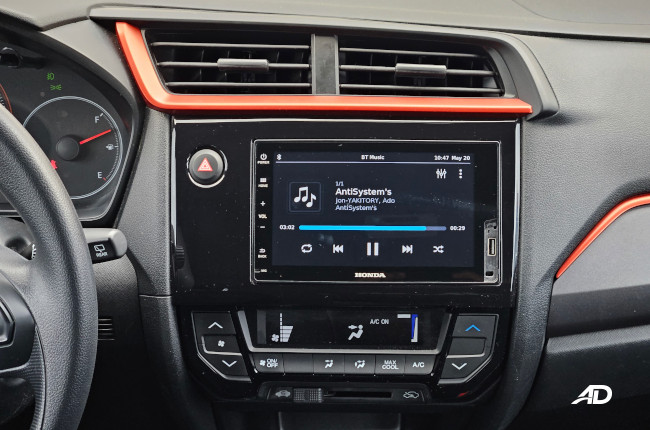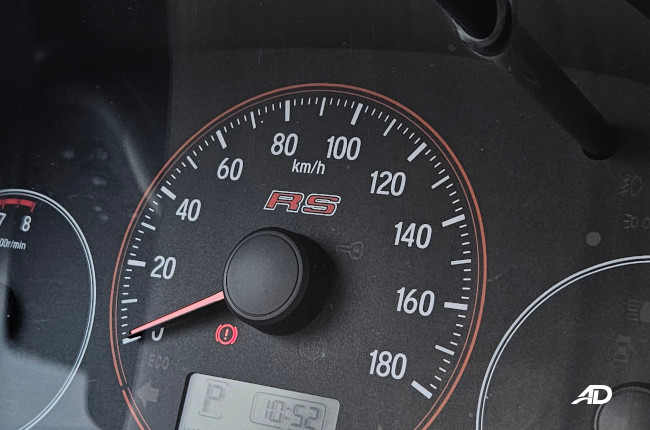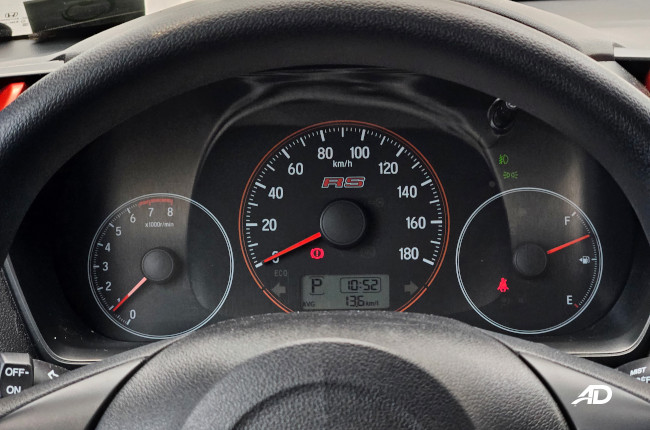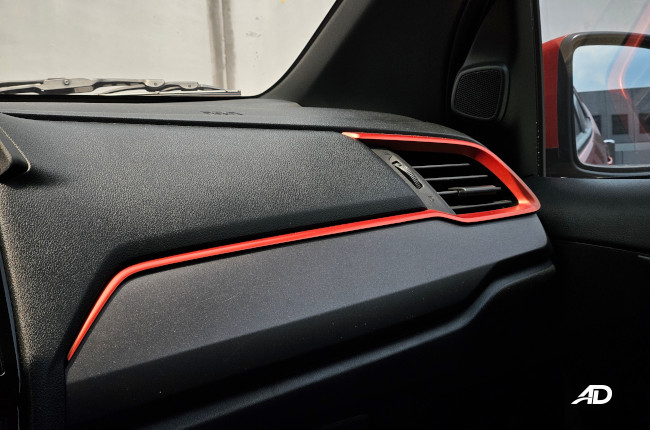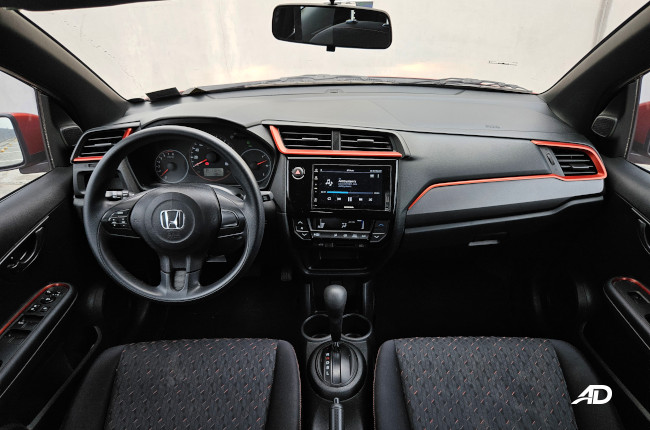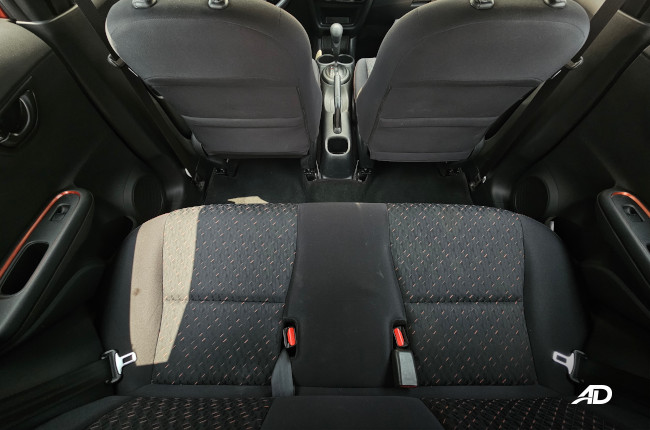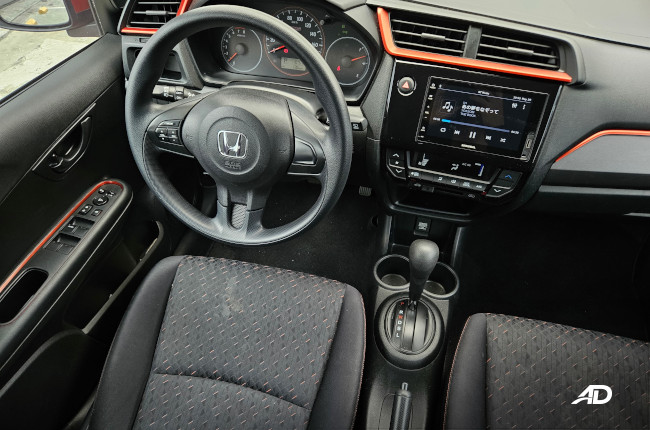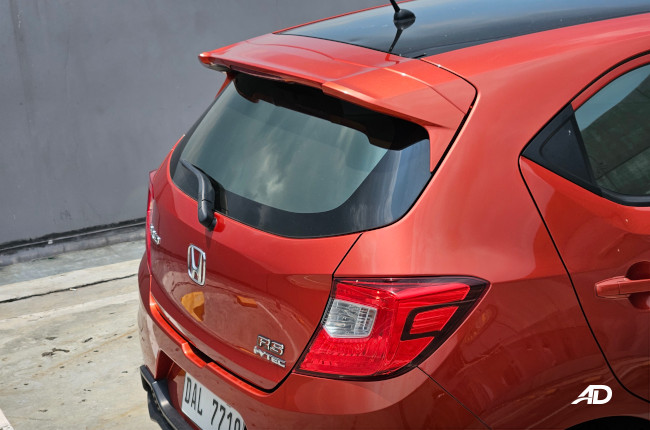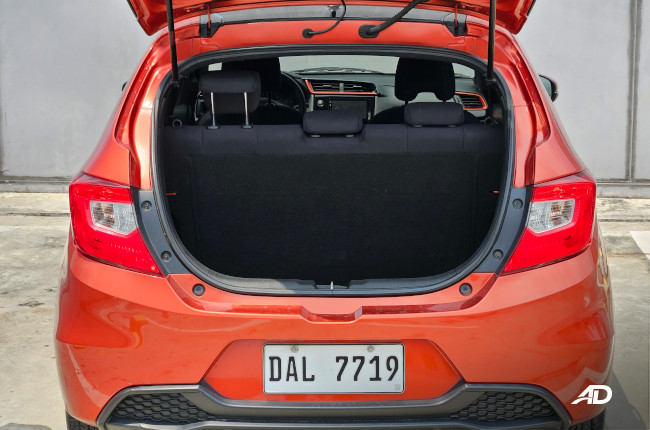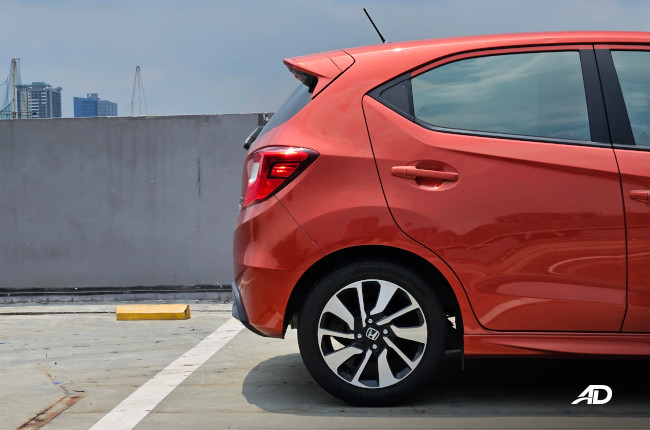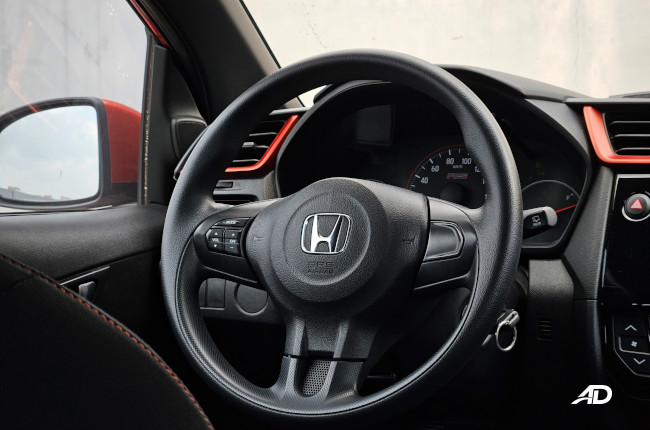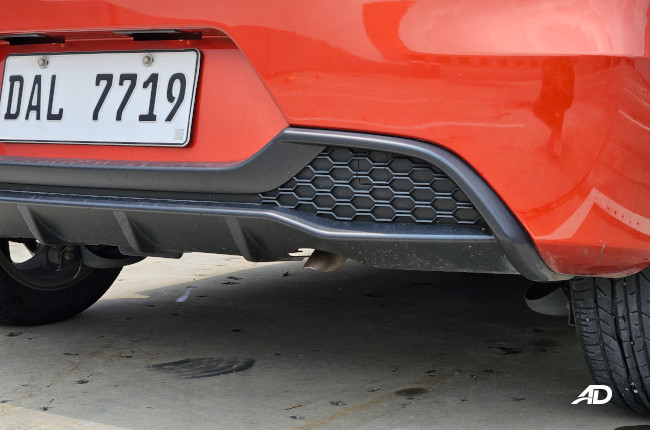
Car buying lately has transformed into a feature master race. As we’ve covered more and more modern cars with longer and longer spec sheets, we sometimes forget to review the actual car itself. With that in mind, a back-to-basics approach was needed, and the Honda Brio fit the bill extremely well.
In 2019, it was the model to get when you wanted a hatchback that was arguably the coolest in the country—at the time. Now, after four years, other brands have since left, while others have overtaken the Brio in terms of value for money and (well, probably not a cool factor) novelty. Novelty? Why that? Well, it is the small hatchback segment, and you’d be hard-pressed to find a car without a bit of personality. With a canvas so small, Honda did what it does best back then, and the unit I’m re-reviewing has about 25,000 kilometers on the clock. Mind you, those kilometers traveled weren’t easy either. Let’s just say that there were a bunch of bumps and scratches on this unit, but you probably wouldn’t be able to pick them out. So let’s take a closer look at this—frankly—outdated hatch and answer the question: Why would I still buy one?
Really? You’d buy one in 2023?
Yes, going on a more personal note, I’ve been a Honda owner for about a decade now, and there is something to be said about the way Big H makes things with wheels. My personal car is a Honda, and one of my bikes is a Honda, but more importantly, my first car was a Honda. Why is my first car important? In my eyes, the first car can set the tone of your ownership moving forward in your automotive life. This may not ring true with everyone, however, so your mileage will vary.
However, I did have a great time with my first car, and lo-and-behold, it was a bit of a homecoming when I got in the Brio. To say that the Brio’s outdated is something of an understatement, but to say that it is familiar, is probably what I would go with in 2019, 2020, 2021, 2022, and finally 2023. I just can’t seem to shake how ‘home-y’ this car feels to me. If you’ve been around Honda’s around the 2010s, you’d know that this is how they did it back then. Is it great? Not absolutely, but more on that later.
But it’s outdated…
It seems weird to say, but 2019 was a different time. Now, nearly all Honda cars have Apple CarPlay and Android Auto along with backup cameras and more, but in the small hatchback segment at the time, people weren’t expecting a lot from a small hatch like this. Nowadays, even the small hatches have backup cameras and even the base models have some sort of rear parking sensors, or none at all because “base model,” but the Brio has none of that. No parking sensors, no rear-view camera, just a good old-fashioned mirror, and your best guestimate.
In truth, the car was small enough to fit almost anywhere anyway, narrow enough to not need fancy 360-degree views or parking sensors. Perhaps if you’re not used to driving at all, you could clip something, however, for the seasoned of us, it’s definitely not a problem.
With that being said, yeah, Honda will probably get more sales if they updated the head unit to the newest crop as found in the BR-V, for example, but that doesn’t mean that it doesn’t do Bluetooth audio. At the very least, it was livable, and using my phone as a navigation device again was a bit of a throwback in a car like this. Safe to say, it made me dig through my stash of phone mounts again.
Quality? Yeah, it’s fine.
Yes, it is fine. Really, for a car of this segment, you can’t expect too much. It’s solid enough, but not luxurious, that much is true. Cloth seats, hard plastics everywhere, some piano black, but with a touch of character thanks to the RS trim’s—well—trim. Given that this is a four-year-old car at this point, however, it’s held up pretty well. The seats don’t look too bad, the bolsters are still standing, and the plastics are still plastic and not some gummy gunky emulsion. So far so great after over 20,000 kilometers of hard driving and likely some not-so-careful occupants, myself included.
This interior lasted. It proved itself well against father time, and mother nature, and the sons of anarchy—in a manner of speaking. However, the cargo area didn’t hold up so well, unfortunately, as the matting material got thinner over time, and perhaps some of its adhesives and clips have given way, but you’re probably not going to notice it anyway.
Quality issues aside, everything up front has held up well. Even the rubberized sections of the interior are fine like the gear selector, and the mechanism itself hasn’t had any issues. A handbrake is a handbrake, a 12-volt socket is still a 12-volt socket, and a cupholder is still a cup holder. Simplicity is oftentimes the way to go if you want something to last long, and that rings true in the case of the Brio.
The car, however, is still as fun to drive as ever.
Look, you can fault me for not giving a flying flack about the lack of features. Honestly, after the industry has moved to a pattern of feature stuffing in cars, it’s nice to get a back-to-basics machine every once in a while—and what a machine it is.

Okay, fine, 1.2-liters of displacement in a four-cylinder gasoline engine mated to a CVT with a grand total of 89 hp and 110 Nm of torque is paltry, at least in relation to bigger cars at least, and the current crop of 1.5-liter turbo and non-turbo Hondas in the lineup. I can only imagine what a turbocharged 1.5-liter Honda motor would do inside the body of a Brio, heck even if it is just the 1.5-liter naturally-aspirated mill, it would be more than enough for a spirited drive. However, the 1.2-liter is just enough for most tasks, and to get any speed out of the thing, you’d have to work a bit hard, and that’s where the fun begins.

Do you know the saying, “It is more fun to drive a slow car fast than it is to drive a fast car slow?” That’s the feeling that I get with Brio. With the engine getting wrung out and going at a surprisingly decent pace, I couldn’t help but smile and cheer it on. It’s so unintimidating to drive, and it’s actually quite fun to see it hit triple-digit speeds. I remember the Brio fondly because it was also one of the first cars that really set the standard for small hatchbacks for me.

Don’t get me wrong, it’s not a drag racer. However, one thing that it does exceptionally well is corner and do its thing in tight turns and back roads away from highways and into the twists and turns of a mountain road. It was fun then, and it still is fun now. The turning radius is still as tight as ever, the car is still as nimble as the day we first drove it, and it still has its classic Honda handling and steering. Fundamentally, the Brio is a great car to drive, unexciting, but definitely a fundamentally sound car.
Frugal fuel sipper
While the engine is not something to write home about in terms of power and torque, one of its key hallmarks and perhaps one of its biggest draws for me is the fuel economy. After testing it again, I ended up with a mixed fuel economy rating of 12 kilometers per liter. That’s with a lot of traffic and a bit of highway via Skyway Stage 3. Traffic alone got me about 10km/L, but that was mostly crawling without much of a stop.
I took the car out for a weekend drive and managed up to 19 kilometers per liter, that’s with a bit of overtaking on the expressway. Sunday city drives and with almost no traffic whatsoever, I was able to push the Brio up to 15 km/L.
So why would you still buy one?

That’s the question I cannot answer definitively. It’s really hard to give a concrete reason as to why this car is a good buy in 2023. First off the styling needs a bit of a refresh, the infotainment has definitely fallen behind the times, and the engine is just alright.
It’s really a more emotional car to buy at this point in time, and there is a bit of nostalgia involved. The Brio doesn’t make sense in the segment unless you’re looking for the most powerful hatch in the class, but apart from that, it’s fallen behind. Yes, it’s fallen behind, but I don’t care.
The argument here is that, if you buy a car for features, did you really buy it for the car? I think that the Brio still makes a strong case for itself because it’s a fundamentally good car to begin with. Besides, you can just buy an aftermarket infotainment unit, hook up a reverse camera, and well, perhaps add a new set of wheels while you’re at it.

I wouldn’t go with the RS trim, however. With an engine as small as the Brio’s it might be better to get the manual transmission variant if you are buying it for the drive that it can offer. With the money you save, you can perhaps, slap on a set of wheels, put in that new infotainment with a reverse camera, put in parking sensors, and perhaps install a few more things to really make the car your own. It’s a blank canvas because there’s nothing, and that’s really the route I would go if I didn’t already have my other Honda. Also, the mere fact that Honda can get away with such a compact car, but with so much room at the back for larger individuals boggles my mind. In fact, sitting behind my driving position, I really don't feel that I am in a smaller car while it's sitting still.
All for a price of just…

Starting price: P680,000 for the one with the five-speed manual gearbox. If you really want the RS variant, then the price goes all the way up to P838,000. This really is one of the last cars in the Philippines that is priced well under P700,000, a rare sight in today’s market where prices hover around the P1,000,000 mark.
So perhaps I would get one, either second-hand or brand-new. The model just makes sense for someone like me who doesn’t really have to haul a lot of stuff and who needs something with a bit of personality when needed. Frankly, it goes all my general sensibilities when I said that I do like this car. On a more personal level, it's really a model that I enjoyed, even if it is a small hatchback, even if it is a little worse for wear at this point, and even if it doesn't have the latest and greatest features. I can safely say that driving dynamics is a timeless thing, however, and that the score that we gave it when it first came to the Philippines still holds true, the car is definitely one of the better ones out there in its segment for the drive alone.
Latest Features
-
The 6 things every Ford Ranger must pass before it leaves the factory / Featured Article
Every Ford Ranger, from the base model to the Ranger Raptor, goes through a full inspection process before it leaves the factory. This includes six steps that make sure it’s ready to drive a...
-
Which GAC AION EV is best for your everyday lifestyle? / Featured Article
The GAC AION lineup has something for everyone, maybe you're after space, speed, or just a smooth city drive. Here's a quick breakdown of which model might work best for your day-to-day life...
-
The AutoDeal Awards 2024: Celebrating excellence in the auto Industry / Featured Article
The AutoDeal Awards 2024: Celebrating excellence in the auto Industry
Popular Articles
-
Cheapest cars under P700,000 in the Philippines
Jerome Tresvalles · Sep 02, 2024
-
First car or next car, the Ford EcoSport is a tough package to beat
Jun 18, 2021
-
Car Maintenance checklist and guide – here’s everything you need to know
Earl Lee · Jan 12, 2021
-
Most fuel efficient family cars in the Philippines
Bryan Aaron Rivera · Nov 27, 2020
-
2021 Geely Okavango — Everything you need to know
Joey Deriquito · Nov 19, 2020
-
Family cars in the Philippines with the biggest trunks
Sep 20, 2023
-
Head to head: Toyota Rush vs. Suzuki XL7
Joey Deriquito · Oct 28, 2020
-
Why oil changes are important for your car
Earl Lee · Nov 10, 2020
-
2021 Kia Stonic — What you need to know about it
Joey Deriquito · Oct 16, 2020
-
Top 7 tips for buying a used car in the Philippines
Joey Deriquito · Nov 26, 2020


